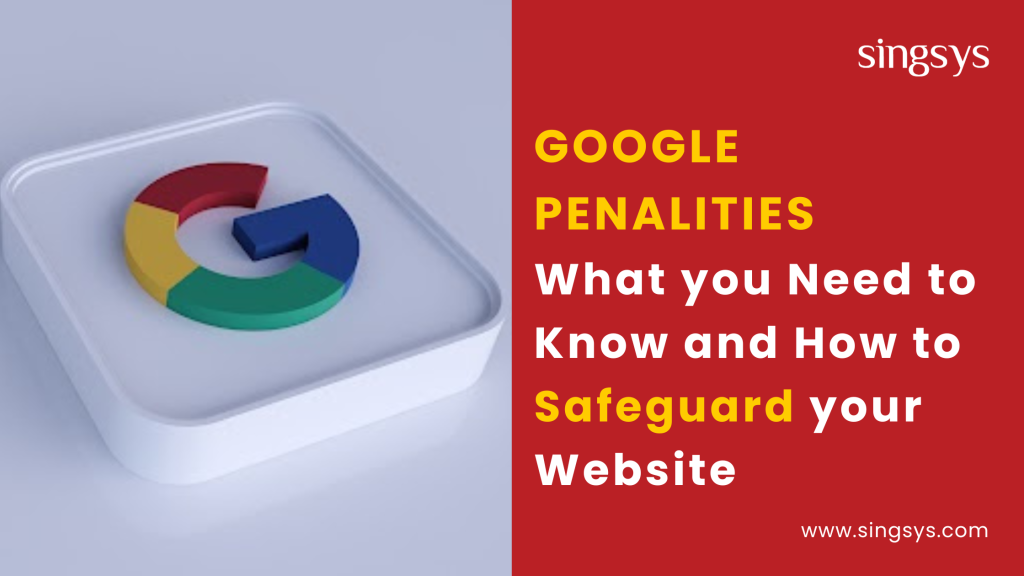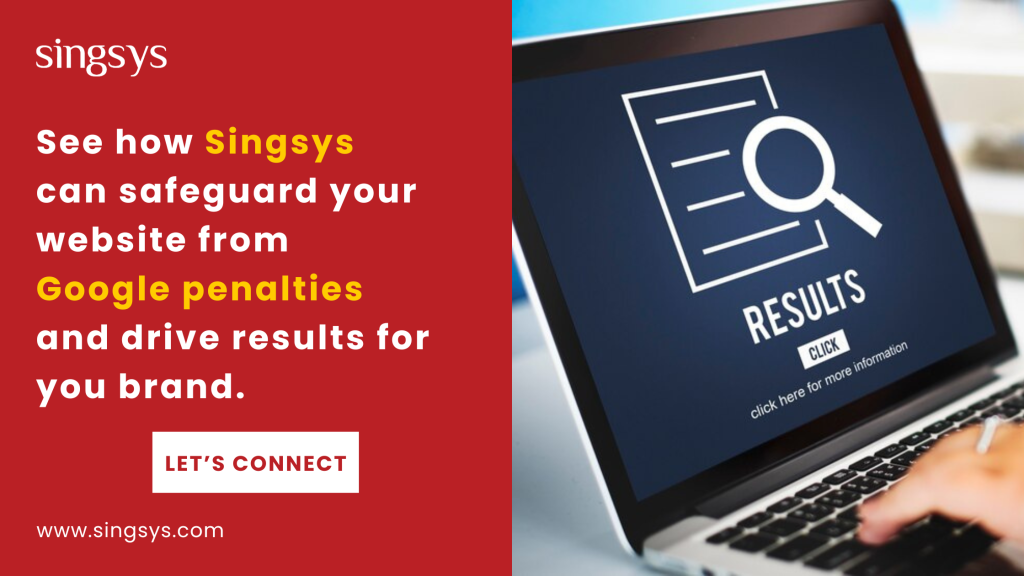How Does Google Ads Search Max Change the Advertising Game
Have you ever wished that running Google Ads could be simpler, smarter, and more effective—all at the same time? If yes, then Google’s latest innovation might be exactly what you’ve […]

Google constantly works on refining its algorithms to enhance search quality, providing users with optimal answers to their queries. However, it’s unrealistic to expect algorithms to handle everything flawlessly. Complementing their automated processes, Google maintains a Search Quality team dedicated to manually assessing websites exhibiting signs of unethical practices. Evaluating whether a site adheres to rules is a full-time responsibility for this team.
While algorithms play a crucial role, it’s essential to distinguish them from penalties. Algorithms like Panda and Hummingbird are not penalties; they’re automated processes designed to execute specific tasks based on predefined instructions. The common misconception arises from the fact that when Google determines a site doesn’t meet quality criteria, its rankings may drop – a phenomenon often associated with penalties. However, Google isn’t penalising the site; it’s rewarding other higher-quality sites and fairly assessing the affected site.
Humans possess the ability to handle non-standard situations and understand context, unlike algorithms. Consequently, when algorithms may mistakenly identify or overlook violations, human reviewers step in to make nuanced judgments. If a reviewer determines that certain pages violate webmaster quality guidelines, Google may issue a manual action against the site.
Websites flagged for attempting to manipulate search results may face consequences such as lower rankings or exclusion from Google Search. While manual actions are precise in detecting spam or unethical behaviour, they remain in effect until a reconsideration request is successfully processed. Hence, it is imperative to take these notifications seriously and promptly address the issues flagged to mitigate potential repercussions.
Why Google Penalties Exist
Google imposes penalties when it identifies websites engaging in practices that manipulate search results or violate its guidelines. Here are some reasons for Google penalties:
When websites allow or encourage users to submit inappropriate or promotional content, such as hidden advertisements in forums or blog comments, Google may take action.
Websites hosted on platforms with widespread spam issues may face penalties. Google may apply manual actions to all sites using the same hosting service if it harbours a significant amount of spam.
Manipulating structured data, which guides browsers and search engines on content organisation, can lead to penalties. For instance, misleading use of structured data for rich snippets, like displaying inaccurate prices or ratings, may trigger manual actions
Engaging in link schemes or spammy tactics to improve search rankings can result in penalties. This includes practices like paying for links, excessive link exchanges, or using automated programs to generate links.
Websites with low-quality or automatically generated content that adds little or no value to users may be penalised. This includes poor-quality guest posts, republished content, and articles lacking substance.
The most severe penalty is applied to websites employing extreme “black hat” practices. Even if just one page contains automatically generated content, Google may issue a manual action against the entire site, necessitating significant efforts to recover.
Websites attempting to manipulate search algorithms by excessively stuffing keywords into pages or using hidden content for crawlers may face penalties. Keyword stuffing is strictly prohibited by Google.
Accelerated Mobile Pages (AMP) should align with their canonical counterparts in terms of information, even if the text differs. Failure to maintain topic consistency or provide users with similar functionalities as on the canonical page can lead to penalties.
Google imposes penalties on websites that violate its guidelines, ranging from minor, temporary ranking reductions to complete removal from the search index.
1. Google Penguin Update
Introduced on April 24, 2011. Google Penguin’s prime focus is to deal with black hat SEO techniques. In this kind of bad SEO practices link manipulation is commonly used which is unethical. Primary Tasks of Google Penguin to deal with : Quality of content, blog comments, social links, For example, if the category of your site is Real Estate, but you are creating backlinks from irrelevant health-based websites, it would be taken as a bad or irrelevant backlink.
2. Google Panda Update
Introduced on 24 April 2012. This algorithm is evolved to fight with thin or low-quality sites. It encourages the visibility of relevant and high-quality content so that search engines can deliver the most appropriate results to a search query. The primary tasks of Google Panda are to deal with: Link schemes, keyword stuffing, over-optimisation, unnatural links. For example, above Real Estate websites have copied content and provided irrelevant information then Google Panda will penalise it by removing it from search results.
3. Google Pigeon Update
Introduced on 24 July, 2014 Google developed this algo to improve local searches. Its primal task is to promote local listings in search results. Primal Tasks of Google Pigeon to deal with: Priority to local listings, submitting sitemap. For example, when you search Real Estate Companies, you will see local companies in the top results just because of this algorithm.
4. Google Hummingbird Update
Introduced on 20 August, 2013 Hummingbird helps to deliver appropriate search results against the search queries. The Hummingbird update prioritises the comprehension of natural language queries and the contextual meaning of words within a search phrase. This aims to provide more precise results and effectively fulfil the searcher’s intent.
5. Google RankBrain Update
Introduced on 26 October, 2015 It is a part of the hummingbird algorithm which was also known as machine-learning artificial intelligence. Here, machine learning means to make a computer system sufficiently capable, so that it can teach itself without any more human efforts or detailed programming. The primary task of Google Pigeon is to deal with Machine learning, artificial intelligence, and machine processing.
Most of the time people are afraid of these algorithms without understanding them clearly. These are good things to keep everything on track. If we follow the guidelines and avoid practising naughty stuff, we don’t need to be worried.

HTTPS is a secure protocol that encrypts the communication between your website and its visitors, enhancing security and instilling trust in the data exchange. Google prefers HTTPS sites and gives them a ranking boost while warning users of non-HTTPS sites as potentially unsafe. To check your HTTPS status, use a tool like SSL Labs or Google Search Console, and make sure you have a valid SSL certificate, no mixed content errors, and no redirects or canonical issues.
Using outdated software and plugins on your website can leave it vulnerable to potential threats, compromising both functionality and reputation. Malicious actors often take advantage of these weaknesses to inject harmful code, redirect traffic, or exploit resources. To safeguard your site, it’s crucial to consistently update your software and plugins, eliminating any unused or unsupported ones. Additionally, employing a security plugin or service can help scan for malware and proactively block potential attacks, ensuring the overall security and health of your website.
Backlinks are links from other sites to your site, and they are an important factor for your SEO ranking. However, not all backlinks are created equal. Certain backlinks may be considered spammy, irrelevant, or of low quality, potentially harming your website’s credibility and authority. Google’s algorithms are capable of identifying such undesirable backlinks and may penalise your site as a result. To avoid this, you need to monitor your backlink profile using a tool like Ahrefs or Moz, and identify any suspicious or unnatural links. You can then disavow them using Google’s Disavow Tool, which tells Google to ignore them.
Site speed is another factor that affects your site’s security and SEO. A slow site can frustrate your visitors, increase your bounce rate, and lower your conversions. It may also suggest that your website is experiencing high traffic, compromised security, or has inefficient coding. Google’s algorithms can measure your site speed and rank your site accordingly. To optimise your site speed, you need to use a tool like Google PageSpeed Insights and follow their recommendations. Boosting your website speed can be achieved through various measures such as compressing images, minimising code, activating caching, and incorporating a Content Delivery Network (CDN).
Google has a set of guidelines that outline the best practices for creating and maintaining a secure and SEO-friendly site. These guidelines encompass areas such as the quality of content, technical elements, user experience, and webmaster policies. You need to follow these guidelines to ensure your site complies with Google’s standards and expectations and avoid any penalties or actions from Google. You can find these guidelines on Google’s Webmaster Central Blog or Search Console Help Center.
Regularly auditing your site is the final step to ensure its security and prevent potential penalties from Google’s algorithms. An SEO audit is a process of analysing your site’s performance, identifying any issues or errors, and implementing the necessary fixes or improvements. An SEO audit can help you keep your site secure, up-to-date, and optimised for SEO. You have the option to utilise tools such as SEMrush for performing an SEO audit, or you can opt to enlist the services of a professional SEO auditor to handle the task for you.
Apr 10th, 2025
Have you ever wished that running Google Ads could be simpler, smarter, and more effective—all at the same time? If yes, then Google’s latest innovation might be exactly what you’ve […]
Mar 5th, 2024
How to use Google’s new Gemini AI
Jun 12th, 2023
Starting from December 2023, Google has implemented a policy update whereby personal accounts that remain inactive for a period of two years will be subject to deletion. Google accounts that […]